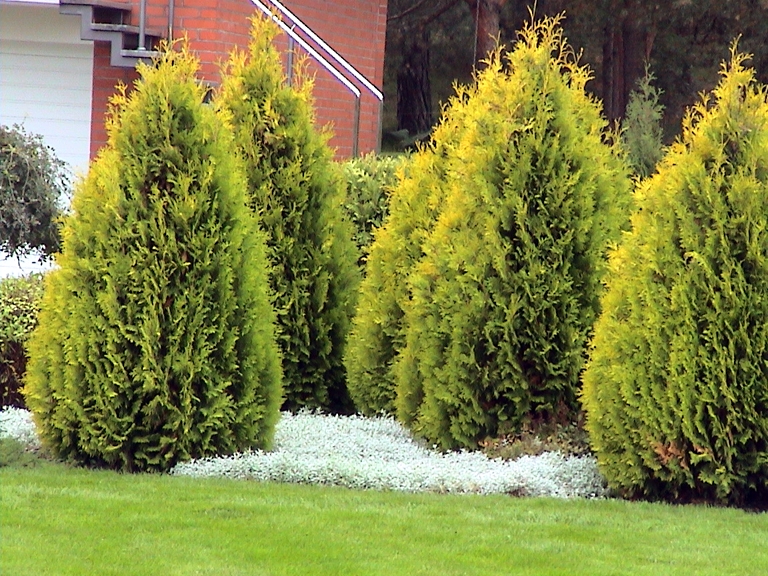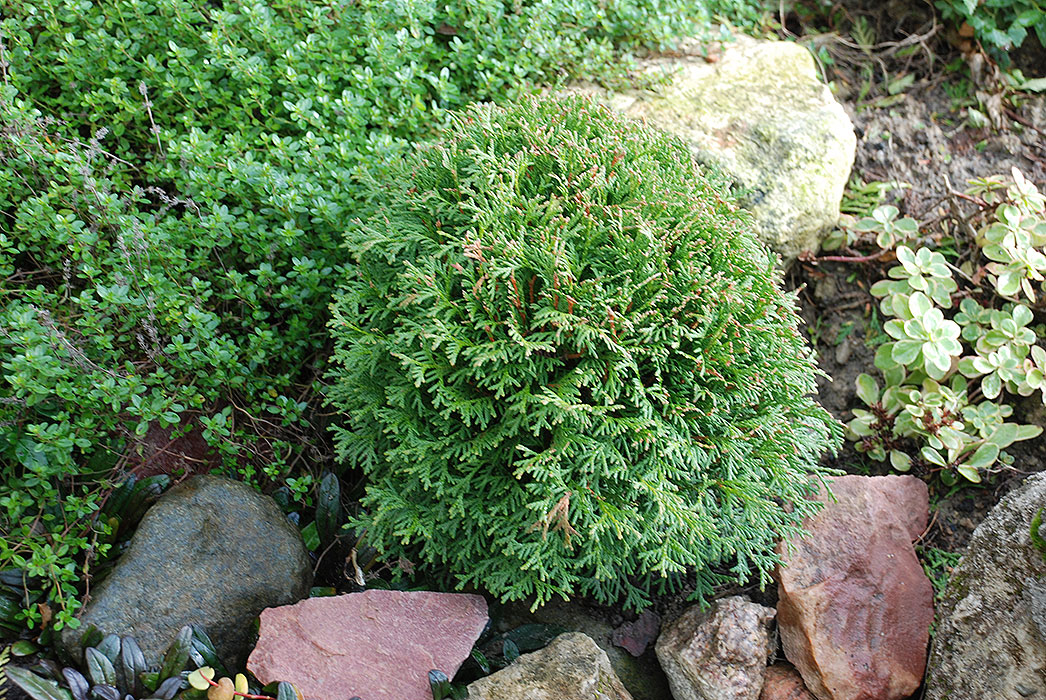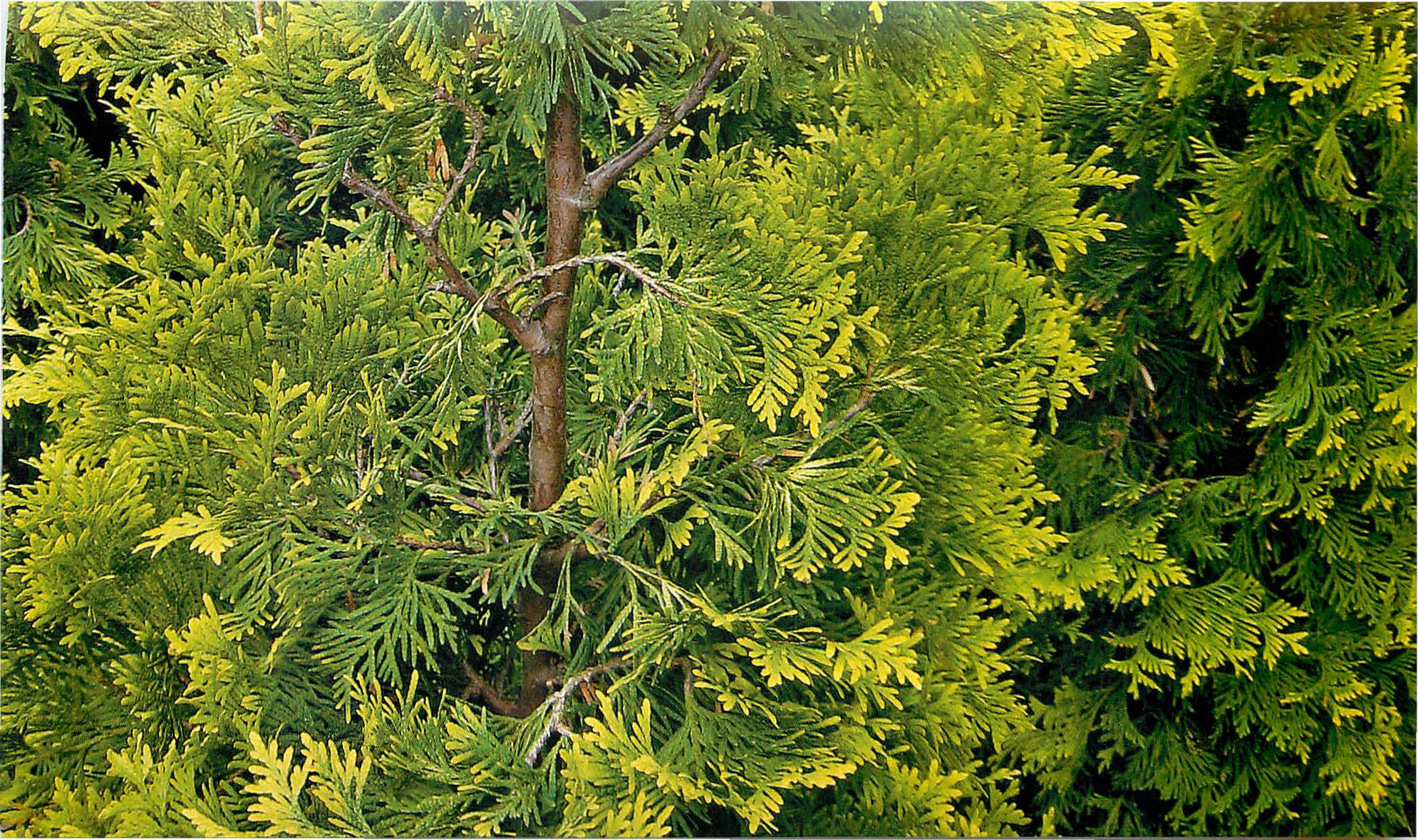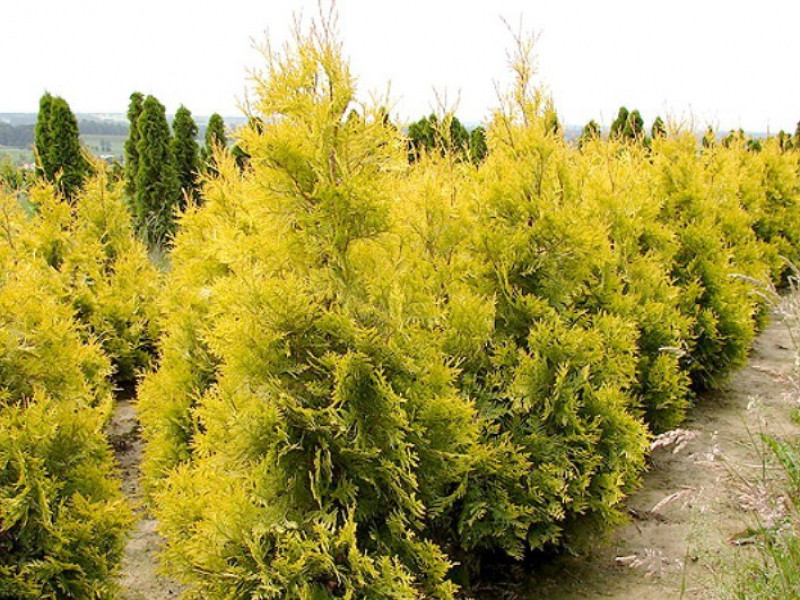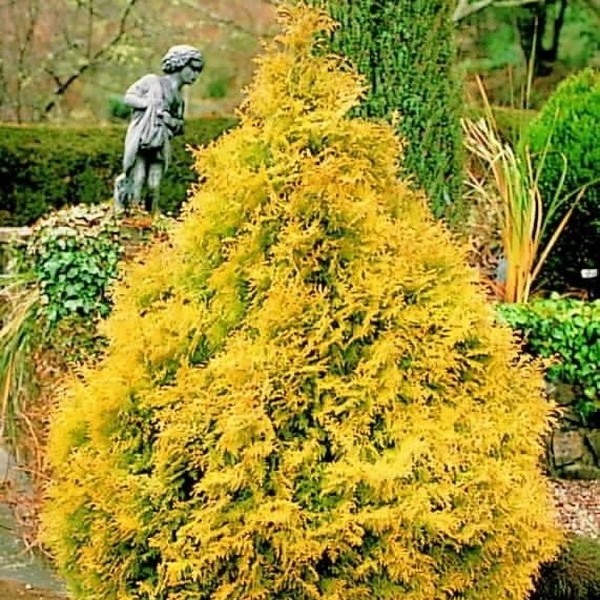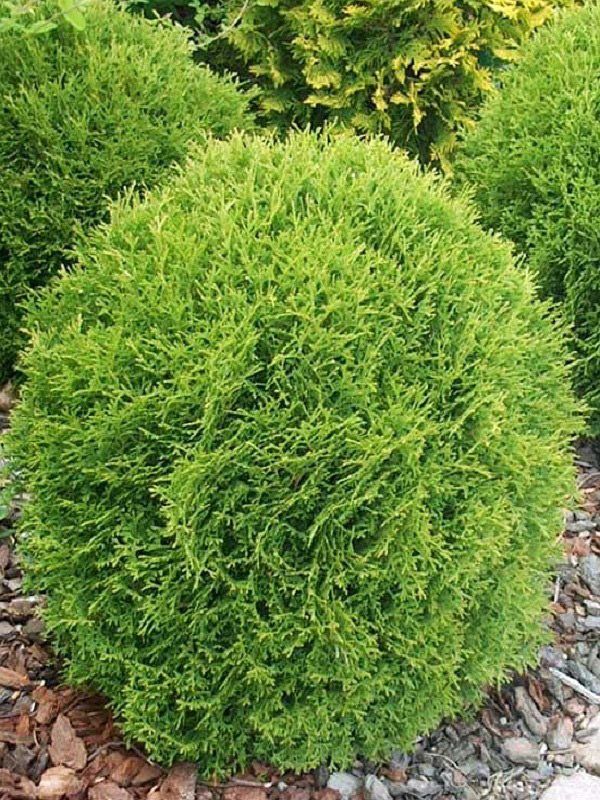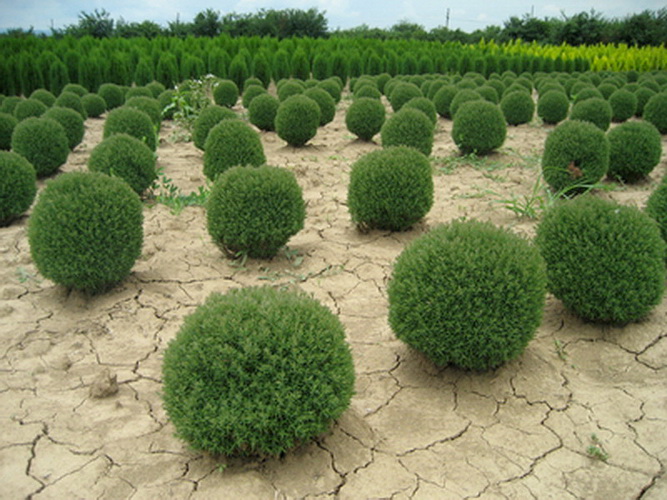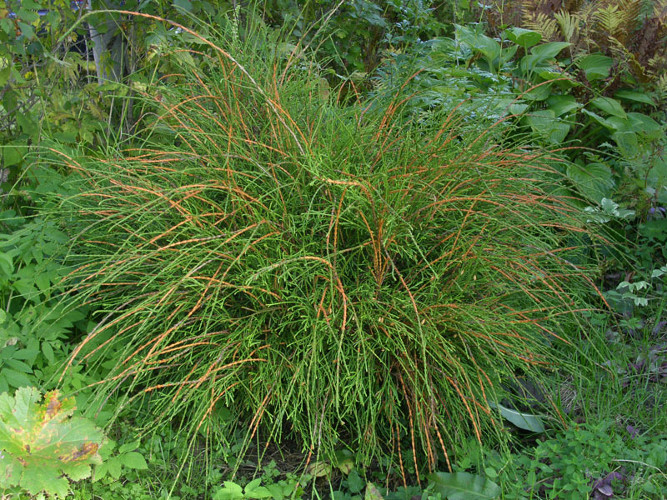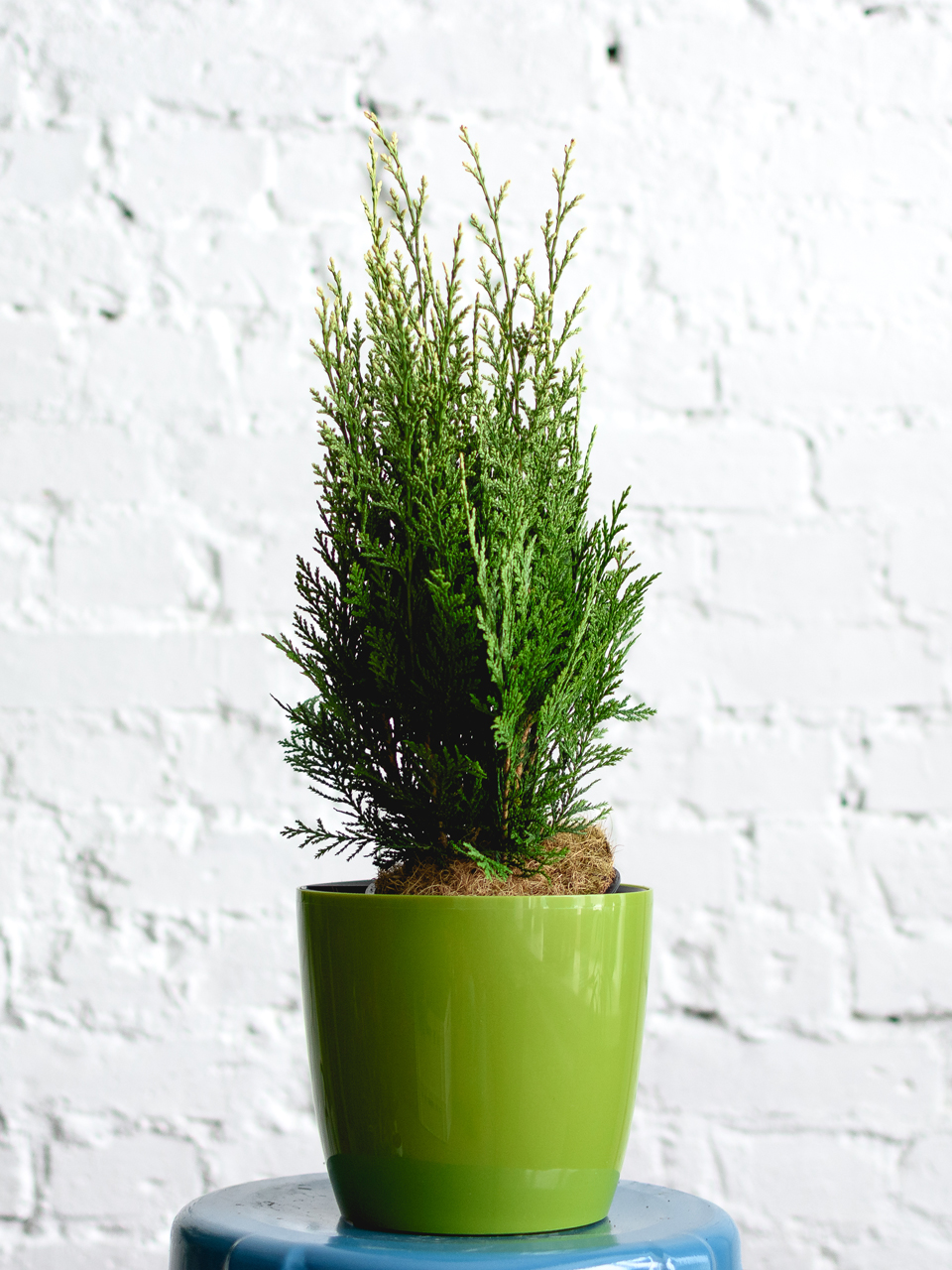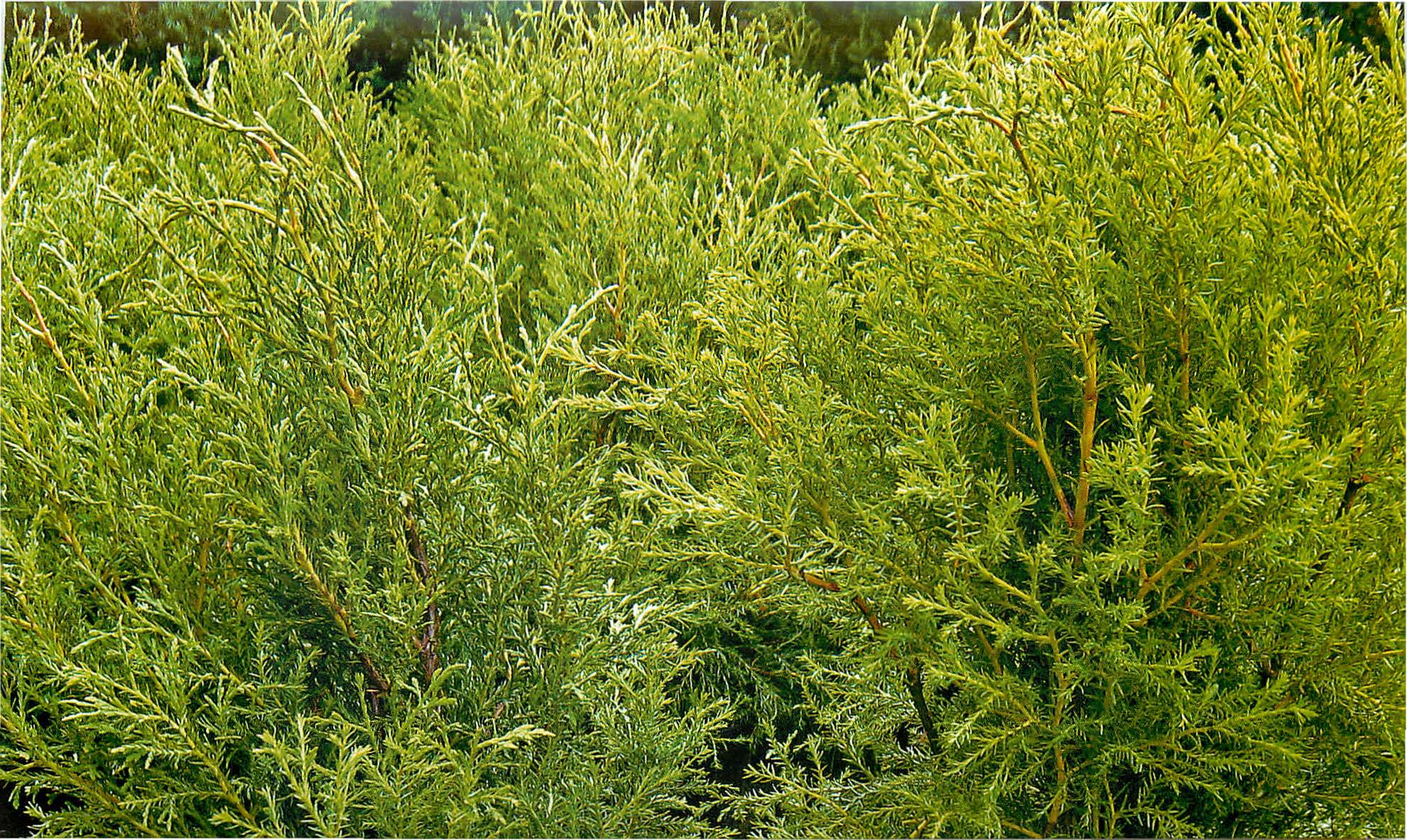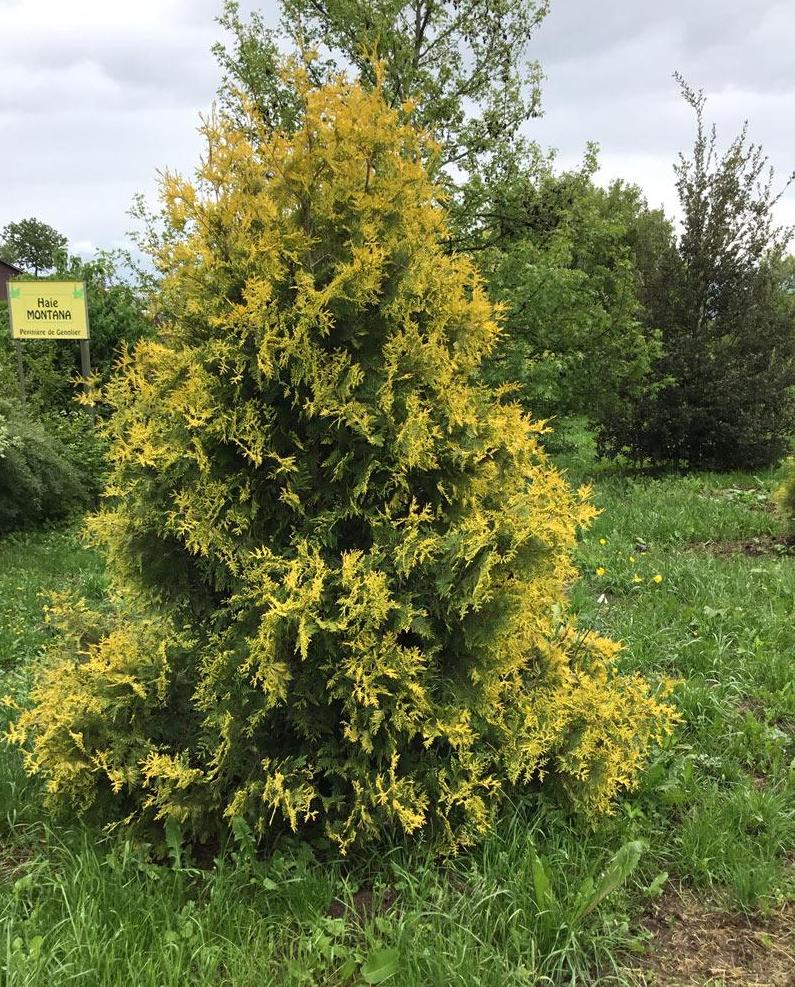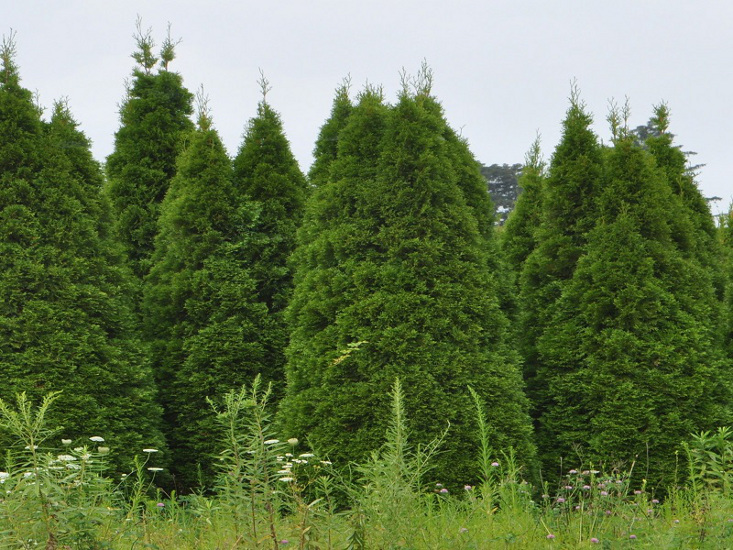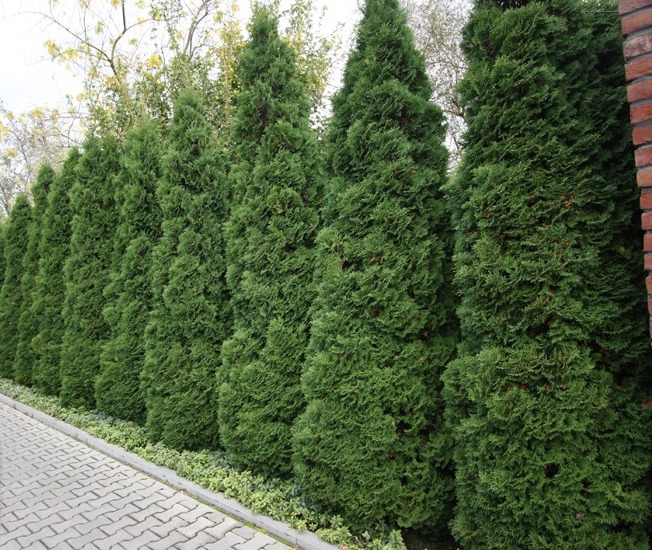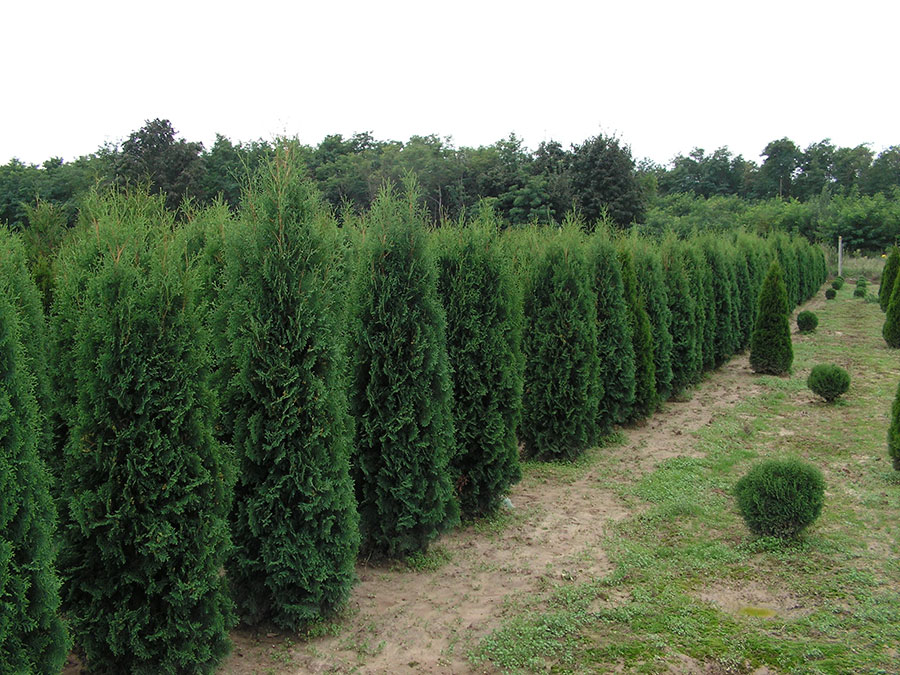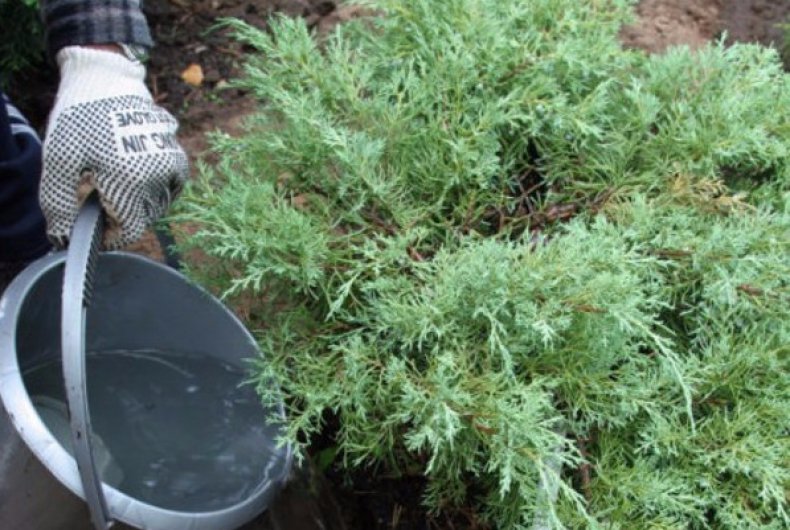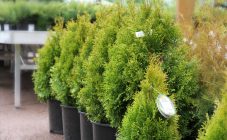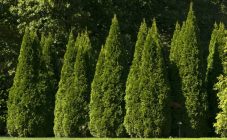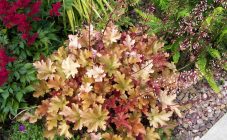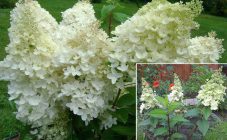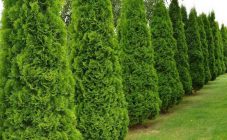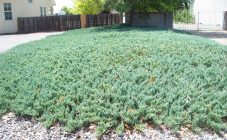Content:
- Thuja. General characteristics of the family
- Thuja western
- The most popular varieties of thuja. Characteristics of each type
- Aurea
- Belokonchikovaya (Albospicata)
- Emerald
- Globoza
- Globoza Nana
- Kristata (Comb)
- Zolotistokonchikovaya (belongs to Tui Gold varieties)
- Reingold (Yellow thuja)
- Danica
- Teddy
- Filiformis (thuja filiform)
- Elegantissima (most graceful)
- Elvanger Aurea
- Erikoides (heather)
- Europe Gold
- Sunkist
- Dumoza
- Douglas Pyramidalis
- Holmstrup
- Dwarf variety Thuja golden
- Tuya Bodhi
- Thuja Columna
- Agrotechnics of culture
- The advantages and disadvantages of culture
Thuja is a cold-resistant, undemanding and beautiful plant. Despite the fact that it is coniferous, it has leaves instead of needles. True, they are very similar to needles. Thuja leaves - scales overlapping alternately on each other. The colors of the needles in the representatives of the family are very different. There are light thuja, golden thuja, spherical and conical. The most common two subspecies are thuja eastern and western thuja. Due to the presence of a huge number of bred hybrids and unpretentious content, western thuja has become widespread throughout the world.
Thuja. General characteristics of the family
Thuja occidentalis (in Latin Thúja occidentális) is an evergreen coniferous tree belonging to the Cypress family, genus Tui. The homeland of the plant is the northern states of America and Canada. It was first described by the scientist Karl Linnaeus in the middle of the 18th century. Although it was known as a culture much earlier.
In Europe, the plant appeared in the middle of the 16th century and since then they began to breed hybrids - European thuja. The name from Greek means "sacrifice" or "incense", which is explained by the aroma of burning wood. It is believed that thuja was used during sacrifices.
Depending on the species, the tree can grow up to 38 m. The crown can be pyramidal or oval. The wood is soft, durable, fragrant and does not rot.
The tree changes its green outfit every 3 years. The needles fall right off the branch. The phenomenon is called branch fall.
Thuja western
Each climatic zone has its own thuja. Representatives of the Western Thuja species are well adapted to the climate of central Russia, the Urals, Siberia, and the Moscow region. Eastern thujas are more thermophilic. There are also universal ones that can be grown indoors or in greenhouses. Many of them are especially loved by gardeners. So what are the thuja?
The most popular varieties of thuja. Characteristics of each type
Here are some varieties of western thuja:
Aurea
Several golden varieties are collected under this name. A pyramidal tree, up to 2.5 meters high, is considered basic. Crown color is yellow - golden in a sunny area and greenish in the shade. In the second half of the growing season, the color is especially bright. The culture looks great in single plantings, in the vicinity of other species (mix in color and crown shape). Absolutely calmly endures frosts and climatic disasters (blizzards, showers, strong winds).
Belokonchikovaya (Albospicata)
Thuja is tall (up to 2.5 m in height), with a conical crown, wide at the base, due to the shoots growing at an obtuse angle at the top. Short leaves - silvery needles at the tips. The contrast is especially noticeable in the first half of the season and closer to cold weather the entire needle becomes colorless.
Emerald
The most demanded breed of columnar varieties of thuja. The tree grows up to 3 m. The advantages are:
- foliage along the entire length of the trunk;
- unchanging bright green color of needles;
- frost resistance; versatility in use.
A variety of eastern thuja, Blue thuja, looks good with Smaragd in compositional plantings.
Globoza
A low (1.2 m) tree with a round crown. The bush is finally formed as a regular ball by the age of 7 and up to 20 years it continues to increase the green mass, expanding in breadth.
The tree grows slightly higher in the shade. The color of the needles changes depending on the season. In warm weather, it is emerald, and in winter it is brownish brown. The variety tolerates the winter well. Does not respond to changes in weather conditions. Use as a garden plant, universal.
Globoza Nana
Small, decorative, spherical thuja. Has a very dense bright green crown. Due to its small growth, it is ideal for decorating borders, rockeries, alpine slides. It can also decorate mono-coniferous plantings. It endures winter without problems, does not succumb to diseases.
Kristata (Comb)
An adult tree has a wide pyramidal crown and grows up to 3.5 m. The branches are fan-shaped, with emerald-gray needles.
Kristata is hardy. It lends itself well to a haircut. Looks beautiful alone, in groups or on the sides of the alley.
Zolotistokonchikovaya (belongs to Tui Gold varieties)
A tall tree reaches maturity by 20 years. By this age, it reaches up to 4 m in height and 2 m in diameter at the base. Ascending shoots are brown or yellow. The needles are green with dark golden ends. The plant is quite hardy and hardy. Used to create hedges, in single plantings and for the design of group compositions.
Reingold (Yellow thuja)
It is very attractive by the color of the needles. From spring to autumn, the color of the crown changes from pink to golden, and in the fall it becomes yellow-copper.
When a tree is one meter tall, it has a spherical crown in its youth. With age, the form becomes somewhat vague, but dense. Very hardy and resistant to changes in climatic conditions. Used to create a Japanese garden, in groups with other types of conifers.
Danica
The most popular form of undersized thuja. The tree grows up to 60 cm. It has a dense spherical thick, consisting of numerous ascending flat branches. It is frost-resistant and undemanding to the ground.
Teddy
Dwarf form of the family. The tree reaches maturity by 5 years. Prefers sunny areas of the garden. It is widely used. In the garden, it can be used for alpine slides, mixborders, to create a composition with other conifers (up to creating a coniferous ground cover lawn, like creeping thuja or creeping thuja). Also, it is wonderfully grown as a pot plant.
The needles are soft, green in summer and brown in winter. Frost and bright sun do not harm the dwarf.
Filiformis (thuja filiform)
An extremely distinctive variety. In the form of a ribbon or cord, the branches hang in an arc from the top of the crown to the bottom, resembling a weeping willow. Also in appearance it is very similar to the Canadian thuja. With age, the crown becomes thick and spherical. Summer green foliage becomes brown by winter.
This type of thuja is very winter-hardy. It is used alone and in composition with pyramidal conifers.
Elegantissima (most graceful)
Tall, with a conical crown, the tree reaches maturity by 40 years. The needles are bright green with white tips. With the onset of cold weather, the white color turns somewhat yellow, fades, and in the spring the crown returns a bright green color. More decorative in open areas.They look great alone and in group plantings. The tree is frost-resistant and resistant to changes in natural phenomena.
Elvanger Aurea
One meter tall trees with a flattened spherical crown. The foliage is golden in summer and bronze in winter. Suitable for various flower beds. There are no problems in wintering.
Erikoides (heather)
A low tree with several crowns. The general appearance of the tree resembles an irregular ball. Soft needles in summer are two-colored - from the bottom they are dense green, from above they are green with yellowness, and in winter they are purple-burgundy.
In ovoid cones, the seeds of the species do not ripen. Reproduction is possible by cuttings. Looks good in the lower tier of tall trees (like downs).
Severe frosts in winter and active sun in spring can scorch the tops of the stems and spoil the appearance.
Europe Gold
Very high bush thuja. In adulthood, it reaches a height of 4 meters. The young plant is pyramidal, very dense and narrow. With age, the crown becomes conical. This species has amazing, orange-colored needles, which turn golden by winter.
The variety is used for planting alleys, in single plantings and in compositions. It tolerates pruning very well. Winter-hardy.
Sunkist
Tall plant (5 m high) with a wide conical crown. The color of the needles is yellow with a golden sheen. The plant lends itself well to formation. Suitable for placement alone or together with other conifers. Frost resistant.
Dumoza
Small shrubs with a round crown and spiral stems. Loves fertile land, light areas and moisture. It is more often used in the design of rock gardens and Japanese gardens. Green needles turn gray by winter. Bushes winter well under the snow.
Douglas Pyramidalis
Outwardly it looks a lot like a cypress. A tree grows up to 15 meters. Shade-loving look. True, this affects the quality of the needles of a marsh shade. Without the sun, it dries quickly and crumbles. Especially in the root zone of the trunk.
The variety is often used to decorate hedges. It can also often be seen in single and group plantings.
Holmstrup
Tall shrub. The crown reaches one meter in diameter. In the summer season, the foliage is lush green and dense, and in winter it acquires a rusty bloom. Frost resistant. It is often used as a single plant, but it also looks good in compositions.
Dwarf variety Thuja golden
The spherical shape is maintained without frequent clipping. The tree reaches a meter in height and width. The variety winters well. Suitable for composite plantings.
Tuya Bodhi
Tall tree (3 m) with a cone-shaped crown. Large needles are bright green in color. Bodhi is unpretentious, winter-hardy. Good for single plantings and as a background for small species. You can plant the alleys with them.
Thuja Columna
The tree grows up to 3-4 meters. It is frost-resistant and does not suffer from sunburn. The bush is deep green all year round. Suitable for any landings.
Agrotechnics of culture
Care for all varieties of thuja is the same. They also reproduce almost all the same. These are seedlings or cuttings.
With all the simplicity of growing a crop, it is worth adhering to some rules.
Drop off location
One of the main conditions is the selection of the appropriate soil. For thuja, this is fertile loam. Sandy ones are also suitable. Only the sand needs to be diluted with clay and humus.
The place of planting is also important. Thuja can grow in the shade, but for decorative purposes it needs a light area. For a beautiful and even crown formation, you should protect the tree from strong winds.
Watering
As soon as the soil warms up and dries up in the spring, the representatives of the family need to be watered abundantly. It is even better to completely spray the plant.This will help knock out winter debris and dry needles from the crown. It is advisable to repeat the summer watering procedure twice a month.
Top dressing
Fertilizers can be applied, but not often. As a top dressing, humus dug into the root zone is suitable. Mulching can also play this role. For example, peat compost, rotten leaves, needles. Mulch will also help retain moisture.
The advantages and disadvantages of culture
The advantages of western thuja can be considered:
- unpretentiousness; frost resistance;
- universality of use;
- immunity to disease;
- resistance to changes in weather conditions.
There are few disadvantages, but they are. It:
- exactingness to the soil;
- the need for sunlight;
- the need for regular watering.
Every day, the fashion for varieties of culture increases. They are beautiful, easy to combine with other plants, including each other. They clean the air well (this is especially important in the confined space of an apartment). Finally, they are available in retail outlets and are not very expensive. If desired, the thuja can be grown with your own hands. So everyone has the opportunity to try themselves in thuja breeding.

